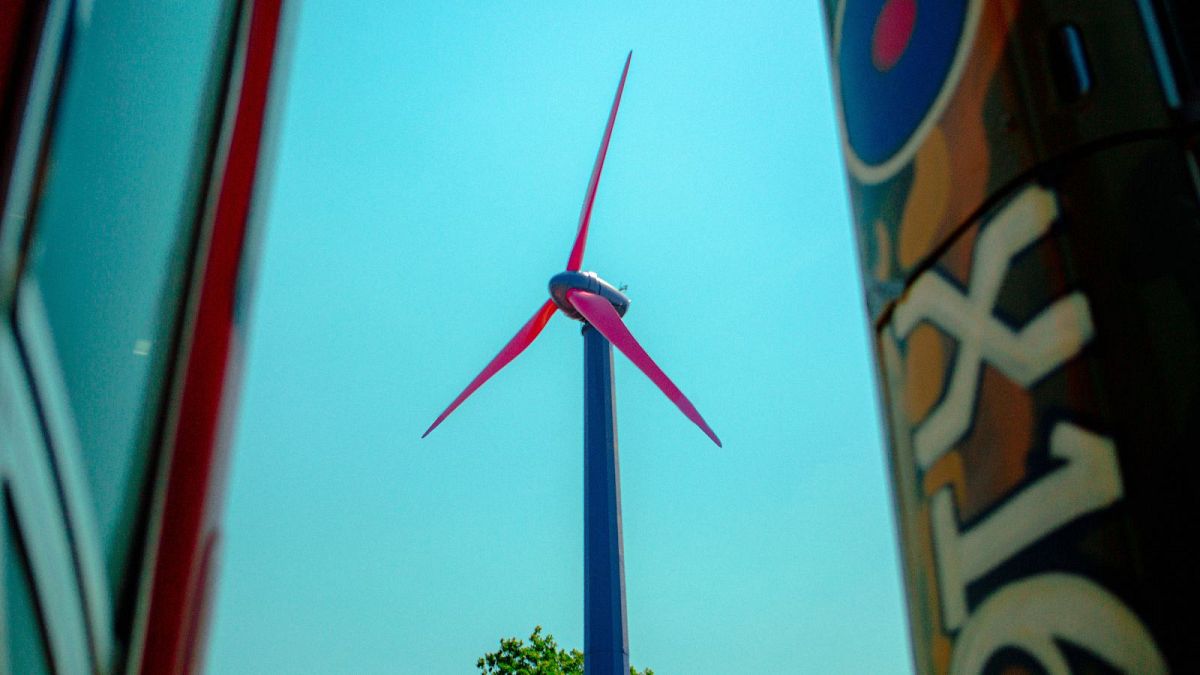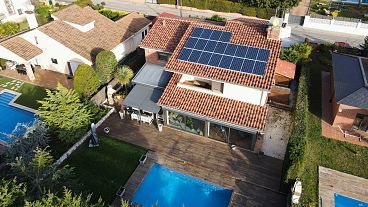Communities have the opportunity to host the turbine after its Glasto stint, under Octopus Energy’s ‘try before you buy’ scheme.
It’s not as if Glastonbury Festival goers need another reason to feel delighted by next week’s line-up.
But the likes of Lizzo, Lana Del Rey and Sir Elton John are being joined by one very prominent guest at Worthy Farm: a pink and purple 28-metre wind turbine.
Octopus Energy erected the tall turbine on 13 June, in a move they say will help make Glastonbury 2023 the greenest yet.
“We agreed the Glastonbury turbine only a few weeks ago,” the renewable energy company revealed on Twitter.
“It took just two weeks to build the parts and a single day to get the turbine up and spinning. That’s how fast green energy can get done when people work together.”
Spinning its eight-metre long blades, the turbine will generate up to 300kWh of power a day. This will be fed into a mini grid providing clean energy to food stalls in William's Green field, near the iconic Pyramid stage.
And it’s just the start of the colourful behemoth’s tour. Communities across the UK are invited to temporarily host the turbine after Glasto, as part of a ‘try before you buy’ scheme.
How can you host a wind turbine?
Launched in 2021, Octopus’s ‘Fan Club’ initiative brings together thousands of small generation projects into one ‘giant wind farm’.
Local customers on a Fan Club tariff can then tap into this clean energy, and benefit from cheaper rates when winds are favourable. There’s a 20 per cent discount on any electricity they use when the local turbine starts turning, rising to 50 per cent when it really picks up.
More than 20,000 people have so far requested a turbine for their communities, Octopus says.
But the company is also giving people a chance to ‘try before they buy’ by temporarily hosting the Glastonbury turbine.
So if you missed out on tickets this year, you can still experience a slice of festival history close to home.
How green is Glastonbury?
The world-famous festival has long been celebrated for its eco-friendly credentials, and has pioneered a number of green energy projects since it began in 1970.
The Green Fields area of the site has run on solar, wind, and pedal power since 1984.
This year all of the festival's power needs will be met by renewable energy and ‘renewable fuels’.
All generators will run on sustainable hydrotreated vegetable oil (HVO) made from waste cooking oil. This helps to cut lifecycle CO2 equivalent emissions by up to 90 per cent, according to the website. That includes the Pyramid Stage and iconic ‘Arcadia’ spider area.
Worthy Farm’s anaerobic digester (which breaks down cow poo) and biogas power plant will be powering offices and some production areas. On-site batteries will store the power produced by an array of solar panels and the new wind turbine.
Greg Jackson, founder and CEO of Octopus Energy, says the company is keen to work with festival co-organiser Emily Eavis to deliver further clean energy solutions in future.
"When I met Emily I was immediately struck by so many shared values," he says. "What was planned to be a short meeting went on for hours as we discussed what makes for a better world.
“I am excited to be able to not only generate green energy at the festival, but to work together for the long term too."
Among other green elements at the festival: compost loos have replaced chemical toilets; waste is hand-separated for single stream recycling, no single-use plastic drink bottles are sold on site; and guests are encouraged to arrive via public transport.
What’s holding UK wind power back?
The wind turbine was only ordered at the end of April, the company says, but now proudly stands five adult giraffes tall.
It shows how quickly new renewable projects can be set up if planning conditions and grid connections allow.
Only two onshore wind turbines were built in England last year, and a handful before that, after a ‘de facto ban’ was introduced in 2015.
Wind energy developers are currently waiting on clarification from the government as to whether or not it will reform planning rules to enable the country to realise its wind potential.



